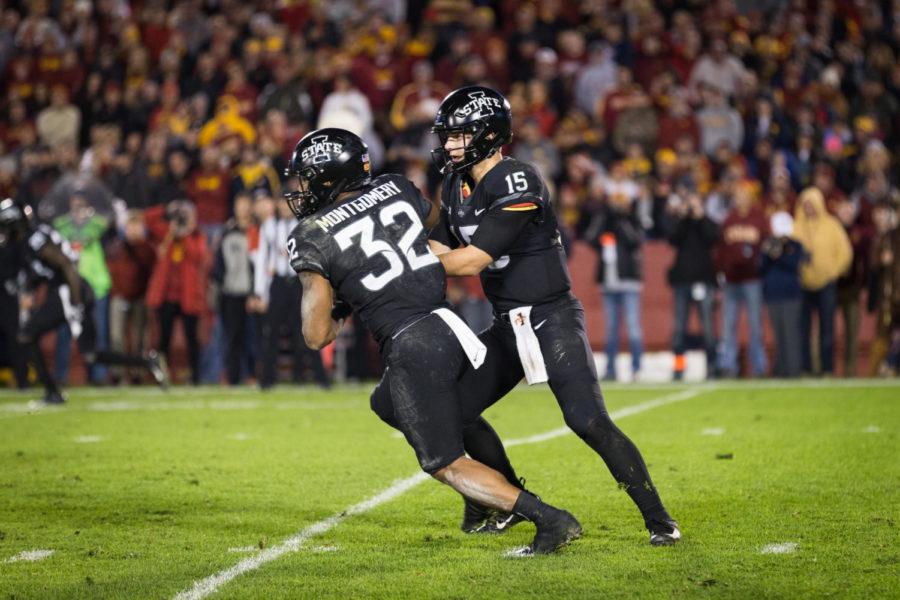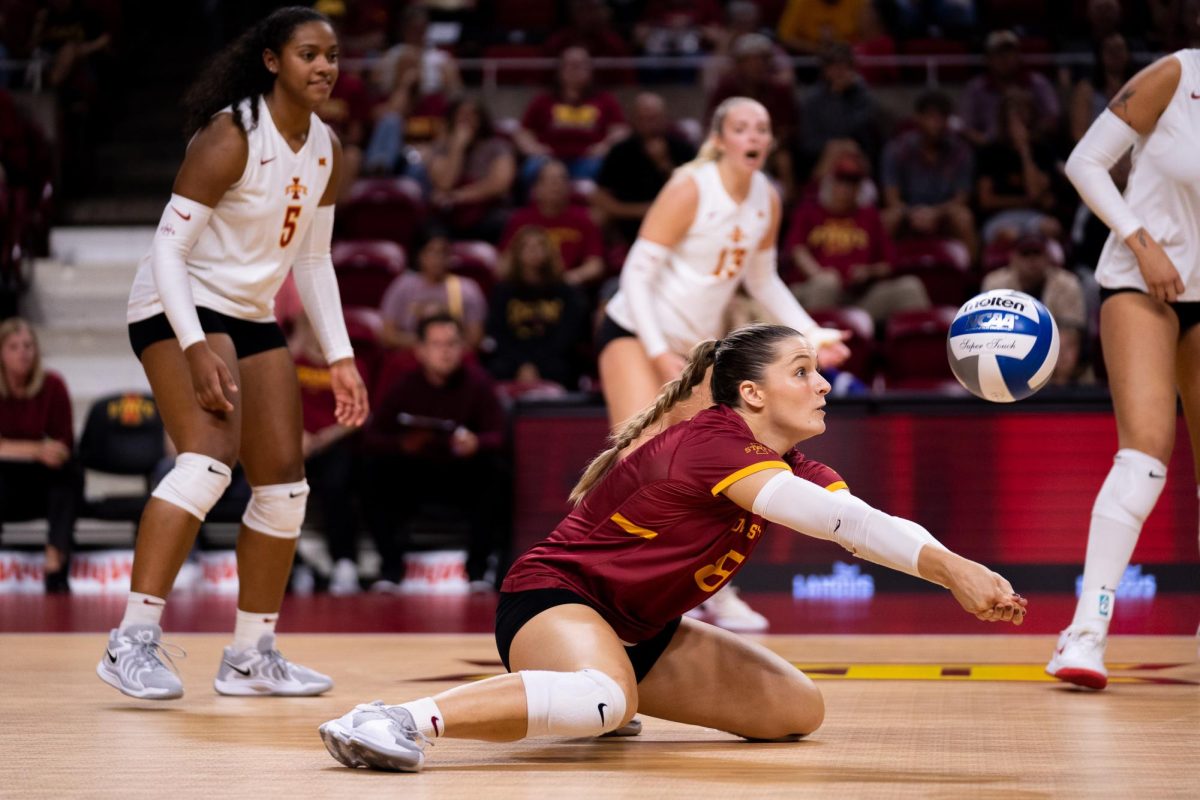Memorial Union Food Service meets diverse dining needs
April 20, 1998
The Memorial Union was completely empty. Every employee had been sent home. Federal security officers with trained dogs inspected every corner of the building, and once it was secure, a skeleton staff — employees who passed a thorough background check — was allowed to reenter through a metal detector.
Kathy Svec, Iowa State Memorial Union marketing coordinator, remembers that day as a once-in-a-lifetime experience.
When the 1995 National Rural Conference brought U.S. President Bill Clinton and Vice President Al Gore to the Union, employees experienced some of the most extensive special procedures ever required by a customer.
“All of the food that was served to the president was tasted first by his steward — the official presidential taster,” Svec said.
Although this type of security is rarely necessary in Ames, it is one example of the unique challenges the Memorial Union Food Service addresses to serve the public.
According to its director, Bill Young, the Food Service is a complex network that includes a food production kitchen, vending machines, catering, reservations, purchasing and maintenance.
It also operates the Cardinal Room Restaurant on the first floor of the Union and the Design Cafe on the first floor of the Design Center, and it provides catered meals for the Iowa State Center, four summer camps and the 4-H Camp.
Young said the Food Service has 49 full-time and 376 part-time employees, most of whom are students.
“We use approximately 100,000 part-time labor hours each year,” Young said. “The personnel efforts are the most challenging part of my job.”
The food court, located on the ground level in the Union, has eight separate units.
“Four are operated by our staff and four are franchisees who rent space and handle their own staff,” Svec said.
The four franchisees are Subway, McDonald’s, Burgie’s Espresso Cafe and Panda Express. They prepare their own food and collect their own money.
The Union operates the four additional units — Chick-fil-A, Tomassito’s, Casa Ortega and Hearthstone.
Svec said the renovation of the ground floor area and food court in 1996, which included an updated main kitchen and brought in the new food options, was badly needed.
“People didn’t trust food from the old facility, and the presentation was old-fashioned and dated-looking,” Svec said. “Since food is our major business, we decided to start over. Our new main kitchen is very high efficiency. It’s half as big, but everything is centralized and more convenient.”
The main kitchen is divided into four distinct work stations: the bakery, a meat slicing area, the cooks’ area and the salad department. Within each station, there are several work areas, each with its own equipment. There are also six large, walk-in coolers and an impressive six-level bakery oven.
Svec explained that between 1,000 and 1,070 items are produced each weekday to stock 26 refrigerated machines in 24 locations on campus. The kitchen workers rotate 100 to 150 items every four weeks. They prepare sandwiches, entrees and desserts, and also stock the machines with commercially produced yogurt and fresh fruit.
Svec said the quality of the items is monitored in several ways. The ingredients are selected for excellence and purchased from licensed suppliers only, and the kitchen is rigorously inspected by the health department.
“Items are in machines no longer than two days before being pulled and discarded, and the date of production is printed on each item made in the Union kitchen,” he said.
The catering department also provides an enormous range of services. Young said Memorial Union Catering schedules about 1,600 events each year and serves about 237,000 people.
Young said most people probably don’t realize how customized the food service is. Catering can be as simple as coffee and cookies, or as elaborate as a $60-per-person multi-course meal.
“We are not a cookie-cutter food service,” Young said. “Whatever you want, we’ll call up and find it. We even had people go fishing in Alaska for us once.”
In addition, the catering department is in charge of scheduling the rooms.
The Union has 21 rooms ranging from a capacity of eight people in the Nook or Cranny to 650 persons seated theater-style in the Great Hall. Prices for renting rooms by block periods of time begin at $25 for the smallest rooms, up to the larger Great Hall and Sun Room, which rent for $300 before 5 p.m. The cost of renting the rooms after 5 p.m. is about half of the day rate.
Although scheduling the rooms takes a lot of organization, Young is most proud of the quality of the food.
“I think a very strong part of our food service is our bakery,” Young said. “It is outstanding. We believe our bakery is a very credible thing to base our food service on. I think that’s what we do best.”
Baked items are used in most of the Union-operated units in the food court and catered events.
The Cardinal Room Restaurant also features the bakery items. The restaurant offers fine dining during the lunch hour. According to a press release, it features a select menu, daily specials and a soup and salad bar in a quiet, professional setting.
In October 1997, the Design Cafe opened on the first floor of the College of Design. It serves a variety of specialty coffees, and in the mornings the Cafe serves muffins, pastries and bagels. The lunch and dinner menus feature deli-style sandwiches, pitas, side orders and desserts.
The Memorial Union Food Service plans to add yet another dimension to its services in the future, Young said. A proposal for expanded food service at the Veterinary Medicine building is expected to be similar to the Design Cafe, but no start date for the project has been announced.
Striving toward customer satisfaction doesn’t make it a sure thing. The Food Service regularly surveys its catering customers to evaluate their satisfaction.
“The majority of customer surveys on satisfaction levels that are returned are positive. If there are problems, they are addressed quickly,” Svec said.
The Food Service tries to correct a problem as soon as it is aware of it. If a customer doesn’t report it until after the event, Svec said the Food Service sometimes makes an adjustment in the cost, and they try to make changes so the mistake doesn’t happen again.
“We listen to comments and make the necessary adjustments,” Young added. “We are extremely flexible.”
Teresa Jones, food sales coordinator for Memorial Union Catering, processes the customer surveys that are returned.
“Comment cards are usually sent out with the billing following an event,” Jones said. “Most people don’t send them back, but what we get are usually very positive or from those who had a real problem.”
Jones explained that the comment cards ask customers to rank their service in six different areas, from poor to excellent. They also ask if the catering service met their expectations or if they have any suggestions on ways the service could be improved.






